Reading the signs
District plans for future “historic” flooding
Old Towne Eureka on its second day of flooding, May 2.
TWO 100-YEAR FLOODS IN 17 MONTHS
No school for five days. People trapped in their neighborhoods. Volunteers storming downtown. The second historic flood, April 30-May 4, hit way closer to home that the flood of 2015.
The Meramec River crested at 46.06 feet, Dec. 30, 2015, and crested at 46.11 feet, May 3, according to the National Weather Service.
Flooding in Eureka:
- 24.5 feet: athletic fields at EHS begin to flood
- 31 feet: District personnel and volunteers began sandbagging at EHS, April 30
- About 35 feet: the Aerobics and Wrestling rooms flood. May 1, Dr. Eric Knost cancelled school for Eureka quadrant schools: Eureka High, ILC, LaSalle Springs Middle, Blevins, Geggie and Eureka elementary schools.
- 40.2 feet: Highway 109 in front of EHS is flooded as well as Interstate 44, May 2. The district is closed.
- About 42 feet: Gym A floods
- 46.11 ft: the Meramec crests and then water begins to recede, May 3.
- about 35 feet: Highway 109 and Interstate 44 reopen, May 4. Restoration crews start to work on EHS.
The flood of 2015 occurred over Rockwood’s Winter Break beginning, Dec. 29, 2015 and receding, Jan. 5, 2016.
The school had to request forgiveness from the Missouri Department of Elementary and Secondary Education to use their four remaining snow days as emergency days and be forgiven one additional flood day.
DESE granted that request, so students did not have to report to school any additional days.
“The flood pushed a lot of things back,” Nikki Hanley (12) said. “As much fun as it was being off for a week, it made school much more stressful because finals were shortly after.”
During the Flood of 2017, school was out of session for five days. Those missed five days not only caused issues for the physical education classes and sports but the classrooms, as well.
“I did have to adjust things a bit,” Gary Baumstark, Language Arts, said. “For my Language Arts 9 class we had to cut out some of the text of “Romeo and Juliet” and showed the movie in place of reading. We had presentations that we skipped over. AP Language I had to compress teaching material and do it a little more quickly than what I would have liked. It cut into our exam review time, as well.”
Even though the flood closed schools, the learning continued.
“I used Google Classroom for my classes so they could work at home while the school was flooded,” Sandy Merrell, Social Studies, said. “I held the AP Exam review session that Saturday when we had all the rain, so it wasn’t affected.”
Those five missed days left teachers scrambling to figure out what to keep in and what to abandon for the last few weeks of school.
“We modified our curriculum and cut some things out because it would be unfair to test kids and have it rushed,” Carlo Atienza, Mathematics, said. “Other classes we ended up cutting down a little bit of the review time so that way we wouldn’t have to modify the curriculum as much. We modified part of the final to accommodate the things we had to cut out.”
End of the year exams approached whether students and teachers were ready or not.
“I feel like it didn’t set us back much because the teachers took stuff out of their curriculum,” Alex Johnson (11) said. “But some teachers didn’t so some classes weren’t particularly ready for finals.”
Teachers knew nationally-normed tests didn’t care about the delays caused by flooding.
“What we tried to do was look at the bigger picture and figure out what was necessary for the ACT,” Atienza said. “We kept the most essential pieces.”
ADAPTING
After Gym A took a hit both times requiring the replacement of the wood floor, the school and district knew something needed to change.
Four district employees fought back flood waters and saved Gym B this second time around.
Chris Freund, director of facilities, was present during both floods and observed that the water wasn’t flooding the surface of the wood floor. The district determined the issue was the water underneath the floor.
The gym floor was considered a ‘floating floor,’ originally constructed using black pegs which allowed water to travel. The only option they had was to remove the wood otherwise the wood would warp.
To prevent the need to replace the floor after a possible future flood, the district facilities people decided to use a carpet pad, also referred to as a ‘continuous floor’ instead of the pegs.
“The hope is that if we get the same amount of water, the carpet will swell and dam the water from traveling,” Gregg Cleveland, athletics director, said. “We’d only have to replace a quarter of the floor.”
Minimizing the amount of time and work to be done after a flood is a top priority.
“Part of the delay in getting the floor installed this time around was we were exploring other options to find something a little more flood proof,” Freund said in a phone interview conducted, Sept. 13. “One of the options we looked at was a rubberized floor. However, with it being the main gym and having varsity basketball events and volleyball events in there, it was decided that the playability of a rubberized floor may not be desirable.”
Another factor that delayed the installation was that the company hired to complete the replacement was booked for the summer. Still, the company managed to fit in the EHS installation.
“The contractor [Alex Versemen from Missouri Floor Company] was extremely accommodating in assisting with both processes,” Freund said.
Gym A opened again, Sept.18, for the first time since the flood of 2017.
After the flood of 2015, the floors of the Aerobics and Wrestling rooms was replaced with rubber flooring as precaution against another flood. In fact, the Wrestling Room was just about to reopen after 2015 flood repairs were complete, when the 2017 flood took it back out of commission.
Preventing flooding in those rooms is not possible since those rooms are affected at a flood level of 35 feet.
Hydrostatic pressure turned out to be a problem for the new flooring in these rooms. The pressure built up from underneath the concrete and displaced part of the rubberized flooring.
The drywall that hung between the Aerobics and Wrestling rooms had to be replaced again after the 2017 flood. Moving the electrical lines in this wall higher will hopefully avoid the issue in the future. The drywall has been replaced with plywood that is easy to remove.
Since the only things covering the walls are plywood and mats, the only flood preparation needed will be to remove those items and clear out all equipment. After a flood, all that will need to be done is remove the water and sanitize the floor.
“They’ve done what I would consider ‘common-sense steps’ to try and eliminate damage,” Cleveland said.
After two years of construction, the athletics building is finally fully repaired and ready for all activities.
“When it comes down to it, our real issue is Gym A. Each time it has flooded, we learned a little bit more about what we’re dealing with and what the actual flood levels mean for the building,” Freund said. “In 2015, nobody had ever seen what 42 feet would look like. It was an alarming experience.”
District personnel–after assessing the damage of flood of 2015–altered their strategy to hopefully lessen future flood damage. They modified their sandbagging operations shifting the focus to the gym circle entrance and had crews in the building at the time of the crest.
“With that staff in the building, we learned a lot about what actually was impacting the athletic building itself,” Freund said. “What we learned was we actually had sewer back-ups within the building that are preventable in the future. Now that we know we have water coming through the floor drains and not necessarily the doors.”
The district has reviewed many options such as building a structure in front of the southside doors or a French drain, according to Freund.
A large reason why the district hasn’t began any construction on the outside of the building is funds. The district is covered by Missouri United School Insurance Council, a self-funded insurance program for schools with a $1,000 deductible. M.U.S.I.C. would not report out how much repairs cost.
LARGER SCOPE
“From the day it flooded in 2015, we’ve been having conversations about what could be done. The thing that takes the most time is engineering and talking to people that can inform you of what will happen,” Freund said. “If we were to divert water from that area, it’s going to go somewhere else. One of the things we don’t want to do is to protect Gym A and then all of a sudden have water in a curriculum wing.”
Although Gym A continues to flood, the district’s focus is keeping the academic building dry, so school can be back in session as soon as water recedes and the required sanitation is done.
“You have to be really careful when displacing water from one area because it’s going to go somewhere else,” Freund said. “We know what’s going to happen right now. If we make modifications without doing the proper investigating, we could be negatively impacting a larger part of the building.”
Whatever the long-term solution may be, it probably won’t be put in place before the spring rains threaten to swell the rivers again.
“The district wants to be smart about what they do,” Cleveland said. “They want to be reserved with the district’s funds by conducting extensive research to make sure the problem will be solved.”
The district has had ‘preliminary discussions’ with engineers on what they can do to the building, according to Freund. Since the overall concern is the entire community of Eureka, the U.S. Army Corps of Engineers has been working with Mayor Kevin Coffey.
“The Corps was supposed to announce on Sept.15 whether we were selected for a flood analysis and plan,” Coffey said in a phone interview conducted, Sept. 24. “However, we have not yet received an answer, which is understandable due to the national hurricane and flooding issues.”
The Corps of Engineers has a total of $100,000 from the federal government to do a full flood study of the Eureka area if it is approved.
“We were better prepared this last year with better and stronger actions to prevent damage,” Coffey said. “About 75 percent of damage was prevented, but we still have 25 percent that we want to minimize. We are always reviewing our system and critiquing ourselves.”
The community’s system includes:
- an Incident Command Center setup
- Volunteers
- Amount of materials and placement of emergency supplies
- Interactions with St. Louis County Emergency Command Center
- Duties of City Staff and Eureka First Responders
- Contacts and assistance in Missouri
- The National Guard
- An evacuation plan for houses in flood territory
- Command structure and training
- Public relations and communication (including St. Louis County’s Emergency Communications system)
On top of figuring out what’s best for the community, “The Army Corps of Engineers is currently remapping the entire St. Louis area flood plain to match every 2 square feet with a flood level.”
The Corps is using part of their annual budget to remap the county and create a visual of what the topography of flooding looks like at each stage level.
Additional funds needed for subcontractors and miscellaneous costs are a specific part of the Corps’ budget.
The Eureka community is only a small part of the overall issue. The Army Corps of Engineers has tackled many issues relating to the Meramec River, including the authorization of the Valley Park levee, which is 8 feet higher than permitted.
If Valley Park were to construct the authorized 435-foot levee, water would have been released at 437 feet, Dec. 30. Valley Park may escape flooding, but the water has to go somewhere.
THE NEXT TIME
Eureka residents have learned to dig in and hope their walls of sandbags will hold the next time as they did during the 2017 flood.
Augustine Heights, Autumn Glenn, Emerald Forest, Mirasol, Radcliffe Place: residents were trapped in their neighborhoods unless they owned watercraft.
“I couldn’t get out of my neighborhood,” Johnson, Augustine Heights resident, said. “There was a back entrance made out of gravel that we used to get in and out and do what we needed to do.”
That gravel path may need to become a more permanent route. The Meramec River is expected to flood again in the near future, according to Robert Criss, professor at Washington University in St. Louis in the Department of Earth and Planetary Sciences.
“On average, serious flooding has occurred every 5 to 10 years in the lower Meramec Valley for many decades,” Criss said in an email interview. “No reason to expect that this won’t continue; in fact there is every reason to expect that this interval could become shorter.”
Criss quantified his data to support his theory in a research article published, Aug. 17, 2016.
In the meantime, don’t be fooled by the current state of the Meramec River.
“I do some weird traveling, and I’m always crossing the Meramec River. It looks low, to me. I certainly think it could take on a heck of alot more water,” Charlie Crouther, head principal, said. “But am I predicting or do I foresee another 500 year flood? No. I think it’s always smart to be proactive and put up preventative measures first rather than take a hit from something like that again.”
Your donation will support the student journalists of Eureka High School - MO. Your contribution will allow us to purchase equipment and cover our annual website hosting costs.

This is Kate’s first semester on the EHS hub staff. She is a news reporter and also covers sports. You can follow her on twitter @klaubEHS_Hub.
Kate’s...

This is Newton's fourth year on staff where she serves as the managing editor on the 2018 Eurekana staff. One word to describe her: eccentric. Conversation...

Glascock is a news reporter for the EHS-hub. This is her second semester on staff. Her hobbies include travelling, writing, hanging out with friends, going...















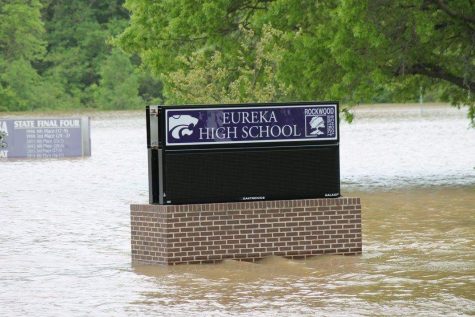
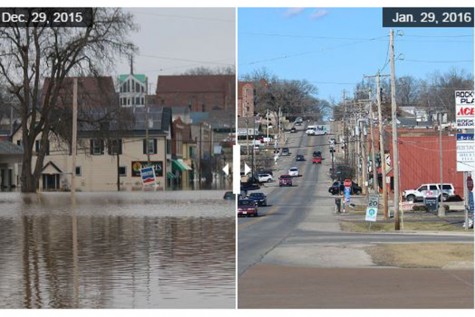

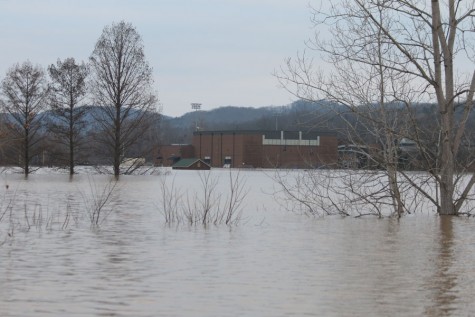
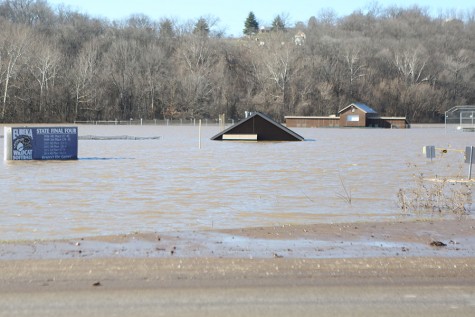
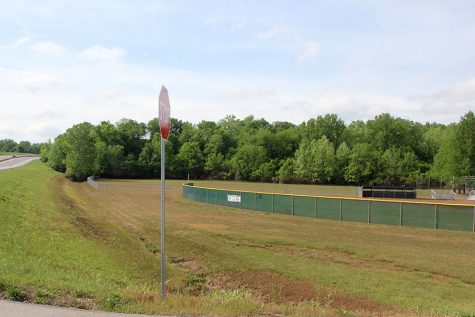
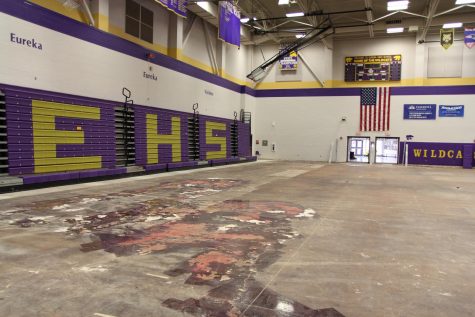

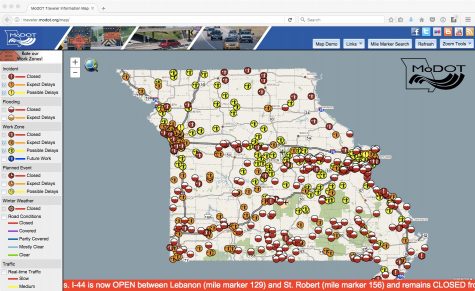
Caleb Sigmund • Sep 27, 2017 at 9:17 AM
I agree.